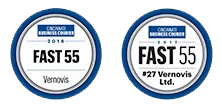In today’s competitive job market, more than simply having a well-crafted resume is needed to land your dream job. Many companies use Applicant Tracking Systems (ATS) to manage the high volume of applications they receive. These systems scan resumes for specific keywords to determine whether a candidate is a good fit for the job. Understanding how to optimize your resume for ATS can significantly increase your chances of getting noticed by hiring managers.
What is an Applicant Tracking System (ATS)?
An Applicant Tracking System (ATS) is software employers use to collect, sort, and manage job applications. ATS automates the initial screening process by scanning resumes for relevant keywords and phrases that match the job description. Resumes not meeting the keyword criteria are often automatically filtered out, meaning they never reach human eyes.
ATS are designed to streamline hiring, saving companies time and resources. They help ensure that only the most relevant and qualified candidates are considered for further review. However, this also means that job seekers must be strategic in crafting their resumes to make it past these automated systems.
What Are Keywords?
Keywords are the specific skills, qualifications, and experiences employers seek in a candidate. They are often found in the job description and reflect the essential requirements for the position. Using the right keywords in your resume can help you pass through the ATS filters and increase your chances of being selected for an interview.
Keywords include technical skills, software proficiencies, industry-specific terms, certifications, and even soft skills. For example, if you are applying for a marketing position, relevant keywords might include “SEO,” “content marketing,” “Google Analytics,” and “social media strategy.” By incorporating these terms into your resume, you align your application with what employers are actively seeking.
How to Identify the Right Keywords for ATS
The first step in optimizing your resume for ATS is identifying the right keywords. Here’s how to do it:
- Analyze the Job Description: Carefully read the job posting and highlight the essential skills, qualifications, and experiences mentioned. Pay attention to specific phrases and terminology used repeatedly. For example, if a job description mentions “project management” multiple times, this indicates it is a critical keyword to include.
- Research Industry Standards: Look at multiple job postings for similar positions to identify common keywords. Industry-specific terms, such as ‘SEO’ in marketing or ‘Java’ in software development, are often critical for ATS optimization. Additionally, reviewing professional profiles on LinkedIn can give you insight into commonly used keywords in your field.
- Use Tools and Resources: Tools like Jobscan, Resume Worded, and LinkedIn’s Job Description Analysis can help identify relevant keywords by comparing your resume to the job description. These tools analyze the text and highlight areas where you can improve your keyword usage.
How to Incorporate Keywords in Your Resume
Once you have identified the right keywords, it’s essential to incorporate them strategically throughout your resume. Here are some tips:
- Include Keywords in Key Sections: Place keywords in the most critical sections of your resume, such as the summary, work experience, and skills sections. For example, if a job posting requires “project management skills,” ensure this phrase appears prominently in your resume.
- Use Exact Phrases: Use the exact wording from the job description whenever possible. ATS are designed to match specific phrases, so variations might not be recognized. For instance, if the job description specifies “customer relationship management,” use this exact term instead of abbreviating it to “CRM.”
- Avoid Keyword Stuffing: While using keywords is important, overloading your resume with them can make it look unnatural and difficult to read. Aim for a balance between keywords and readable content. Ensure that your resume still tells a coherent story about your qualifications and experiences.
- Leverage Job Titles and Company Names: Mention previous job titles and company names as they appear in the job description. This can help the ATS recognize your relevant experience. If your job title was slightly different but the role was the same, consider using both titles (e.g., “Sales Associate/Customer Service Representative”).
Formatting for ATS Compatibility
In addition to using the right keywords, it’s essential to format your resume correctly for ATS compatibility:
- Use Standard Fonts and Formats: Stick to standard fonts like Arial, Times New Roman, or Calibri. Use typical section headings such as “Work Experience,” “Education,” and “Skills.” Avoid using headers or footers, as they may not be parsed correctly by ATS.
- Avoid Complex Formatting: ATS can have difficulty reading complex formatting elements like tables, graphics, and text boxes. Keep your resume simple and straightforward. Use clear, concise bullet points to list your responsibilities and achievements.
- Save in the Right File Format: Most ATS prefer resumes in Word (.doc or .docx) format over PDFs. Check the job posting for any specific requirements regarding file format. While PDFs preserve your formatting, they might not be read correctly by all ATS.
- Use Bullet Points: Bullet points are easier for ATS to read than paragraphs. Use them to list achievements and responsibilities clearly. For example:
- Managed a team of 10 marketing professionals to execute a comprehensive digital marketing strategy.
- Increased website traffic by 25% through targeted SEO and content marketing efforts.
Balancing ATS and Human Readability
While optimizing your resume for ATS is crucial, it’s also essential to ensure it remains readable and engaging for human reviewers. After passing the ATS, your resume will be reviewed by hiring managers who will assess your qualifications and experience. Here’s how to strike the right balance:
- Keep it Clear and Concise: Use clear language and avoid jargon that might not be understood by everyone. Keep your resume concise, ideally one to two pages long. Focus on the most relevant and recent experiences.
- Highlight Achievements: Focus on your achievements and quantify them where possible. Use bullet points to make this information stand out. For example, “Increased sales by 30% over six months by implementing a new sales strategy.”
- Showcase Soft Skills: While ATS primarily scans for hard skills, showcasing your soft skills can make your resume more appealing to human reviewers. Include these in the summary or work experience sections. Soft skills such as “teamwork,” “leadership,” and “problem-solving” can set you apart from other candidates.
- Personalize Your Resume: Tailor your resume for each job application. While this requires extra effort, it can significantly increase your chances of success. Customizing your resume shows that you have taken the time to understand the job requirements and are genuinely interested in the position.
Common Keyword Mistakes to Avoid
When optimizing your resume for ATS, there are common mistakes to avoid:
- Ignoring the Job Description: Failing to tailor your resume to the job description can result in missing out on essential keywords.
- Overloading with Keywords: Using too many keywords can make your resume look forced and unnatural.
- Using Uncommon File Formats: Submitting your resume in a file format not supported by ATS can result in your application being overlooked.
- Complex Formatting: Using tables, graphics, or text boxes can cause parsing errors in ATS.
Keyword Optimization for ATS – Final Thoughts
Optimizing your resume for Applicant Tracking Systems (ATS) is a crucial step in the job application process. By understanding the importance of keywords and incorporating them strategically, you can increase your chances of passing the initial screening and getting noticed by hiring managers. Remember to balance ATS optimization with human readability to create a resume that gets through the filters and impresses the people who make the final hiring decisions. With these strategies, you can enhance your job search and move closer to landing your desired position.
Incorporating these strategies ensures that your resume is both ATS-friendly and appealing to human reviewers. By carefully crafting your resume to include the right keywords, proper formatting, and clear, concise information, you can navigate the job application process more effectively and improve your chances of success.
Looking for a New Job? Vernovis Can Help!
If you’re in the market for a new and exciting job opportunity in the Midwest, think Vernovis. We are more than a recruitment service. We work with candidates to develop their professional brand and value proposition. Across Ohio, Pennsylvania, and Kentucky, we represent IT, accounting, and finance professionals, helping them achieve their career goals by matching them with critical projects and dynamic jobs throughout the Midwest. Learn more about our services or reach out today.






